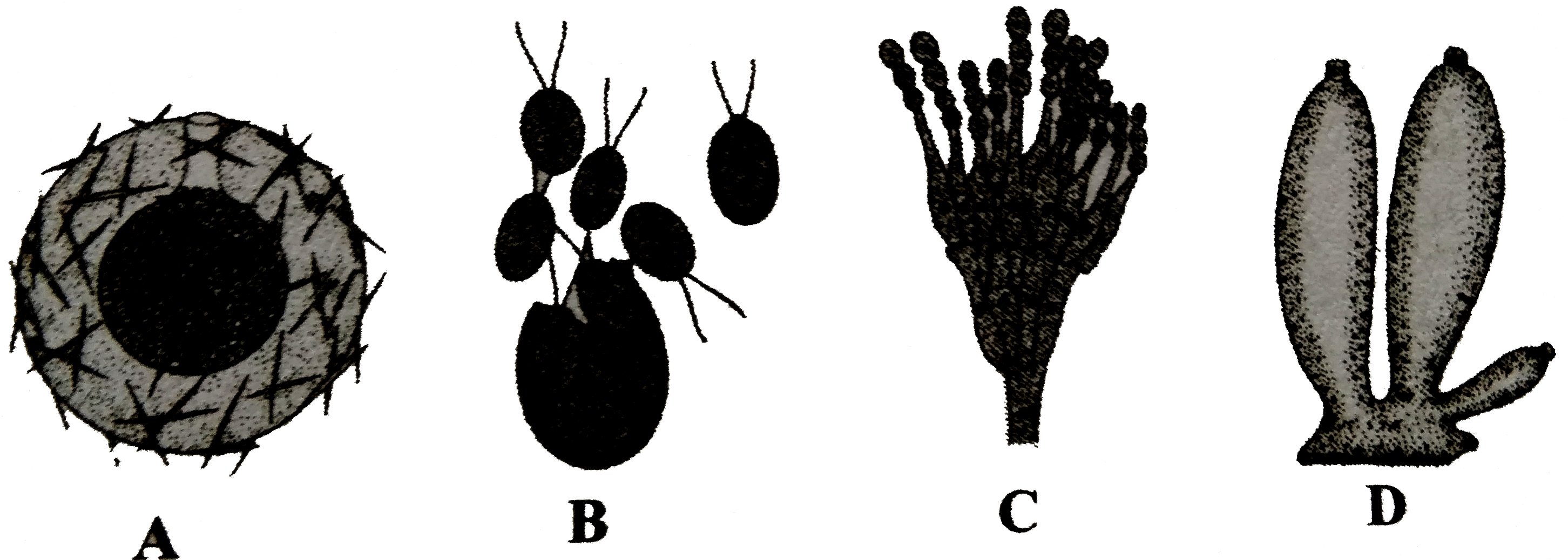Asexual reproduction in sponges occurs by
(a) Parthenogenesis
(b) Budding
(c) Fragmentation
(d) Spore
Parthenogenesis
Budding
Fragmentation
Spores
The correct Answer is:C
To solve the question regarding the method of asexual reproduction in sponges, we can follow these steps:
Step 1: Understand the Question
The question asks about the method of asexual reproduction in sponges. We need to identify which of the given options is the correct mechanism.
Step 2: Analyze the Options
We have four options to consider:
- (a) Parthenogenesis
- (b) Budding
- (c) Fragmentation
- (d) Spore formation
Step 3: Review the Characteristics of Sponges
Sponges belong to the phylum Porifera. They are known for their simple body structure and unique reproductive methods.
Step 4: Evaluate Each Option
- Parthenogenesis: This is a form of asexual reproduction where an egg develops into an organism without fertilization. This is not a common method in sponges.
- Budding: This is a form of asexual reproduction where a new organism develops from an outgrowth or bud on the parent organism. In sponges, asexual reproduction primarily occurs through budding.
- Fragmentation: This involves the breaking of the organism into pieces, each of which can grow into a new individual. While some organisms can reproduce this way, it is not a primary method for sponges.
- Spore Formation: Sponges do not reproduce asexually through spores; this method is more common in fungi and some plants.
Step 5: Identify the Correct Answer
Based on the analysis, the correct answer is (b) Budding, as sponges primarily reproduce asexually through this method, specifically through endogenous budding, which leads to the formation of structures known as gamules.
Conclusion
The correct answer to the question is (b) Budding.
---
The question asks about the method of asexual reproduction in sponges. We need to identify which of the given options is the correct mechanism.
We have four options to consider:
- (a) Parthenogenesis
- (b) Budding
- (c) Fragmentation
- (d) Spore formation
Sponges belong to the phylum Porifera. They are known for their simple body structure and unique reproductive methods.
- Parthenogenesis: This is a form of asexual reproduction where an egg develops into an organism without fertilization. This is not a common method in sponges.
- Budding: This is a form of asexual reproduction where a new organism develops from an outgrowth or bud on the parent organism. In sponges, asexual reproduction primarily occurs through budding.
- Fragmentation: This involves the breaking of the organism into pieces, each of which can grow into a new individual. While some organisms can reproduce this way, it is not a primary method for sponges.
- Spore Formation: Sponges do not reproduce asexually through spores; this method is more common in fungi and some plants.
Based on the analysis, the correct answer is (b) Budding, as sponges primarily reproduce asexually through this method, specifically through endogenous budding, which leads to the formation of structures known as gamules.
The correct answer to the question is (b) Budding.
Similar Questions
Knowledge Check
Study the following figures and select the correct statements regarding these.

(i)A shows mode of asexual reproduction in sponges through internal buds.
(ii)B shows sexual reprodction through zoospores in Chlamydomonas.
(iii) C shows asexual reproduction through fragmentation in Penicullium.
(iv) D shows external budding in Sycon.A(i) and (ii)BSmaller organisms always have shorter life span and vice versa.C(ii), (iii), and (iv)D(i) and (iv)
Asexual reproduction occurs in Hydra during
View SolutionAsexual reproduction occurs in Hemichordata by
View SolutionAsexual reproduction through formation of gemmule occurs in
View SolutionAsexual reproduction takes place through budding in
View SolutionBudding method of asexual reproduction occurs in
View SolutionName the asexual reproductive spores in fungi.
View SolutionDuring favorable conditions bacteria mainly reproduce by
(a) Budding
(b) Fragmentation
(c) Sporulation
(d) Fission
View Solution
